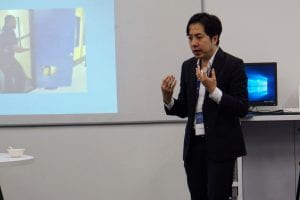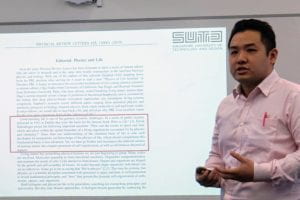Prof Miguel Sanjuan engaged us on the use of basin entropy to quantify the uncertainty in Wada basins.
Prof Jose Mendes illuminated us on how simplicial complexes lead to a zoo of architectures and geometries of complex networks.
Prof Stefan Thurner showed us that by using sample space reducing as a framework for driven-system with relaxation, a host of distributions can be derived to describe the statistics of non-equilibrium systems.
Dr Philip Chodrow introduced a new approach that accurately predicts the occurrence of phase transition of persistent disagreement in the adaptive voter model.
Dr Malgorzata Turalska shared with us the importance of considering network assortativity in suppressing large cascades within inter-dependent network.
Prof Mile Gu intrigued us with the theory that quantum models running classical causally asymmetric stochastic processes have vanishing memory overheads.
Prof Kang Hao Cheong explained to us how biological organisms can combine the losing strategies of nomadism and colonialism to paradoxically survive and maintain long term growth.
Prof Byungnam Kahng demonstrated how a restricted random graph model can be used to uncover the underlying mechanism of hybrid percolation transition in terms of cluster merging processes.
Lin Zhang presented on the complex dynamics that evolve in neural networks and how he employed mutual information to characterize it.
Ayana Aspembitova analyzed empirical data from the cryptocurrency markets of bitcoin and ethereum, and inferred their market participants behavior by means of network construction, clustering, and features extraction.











